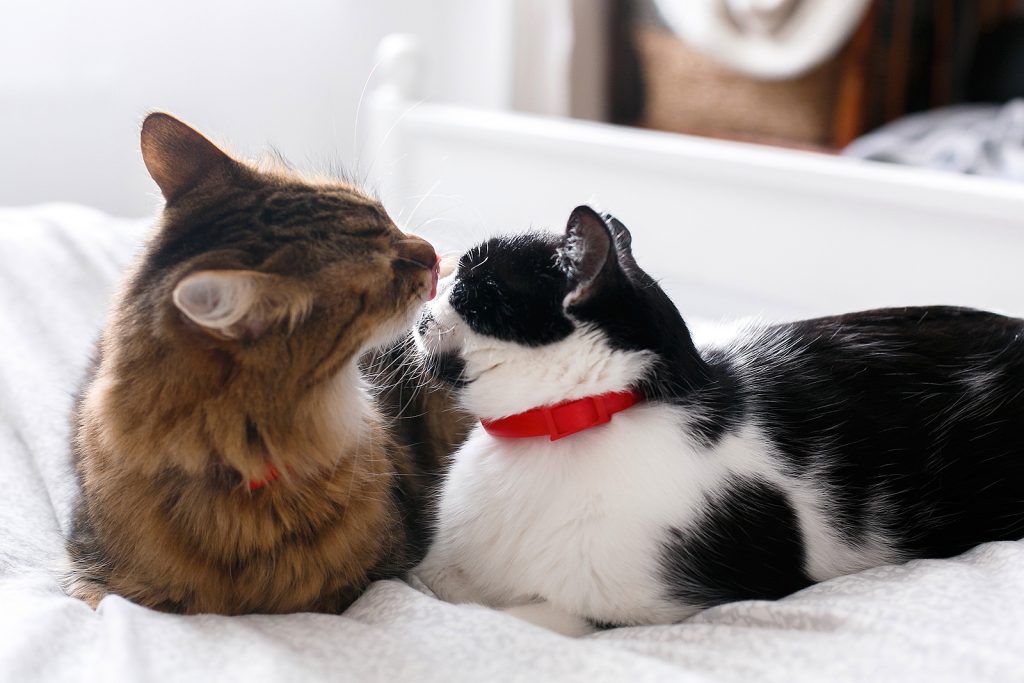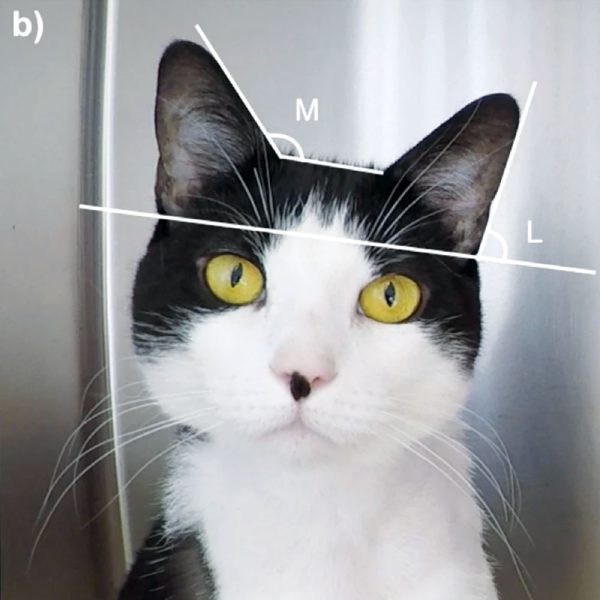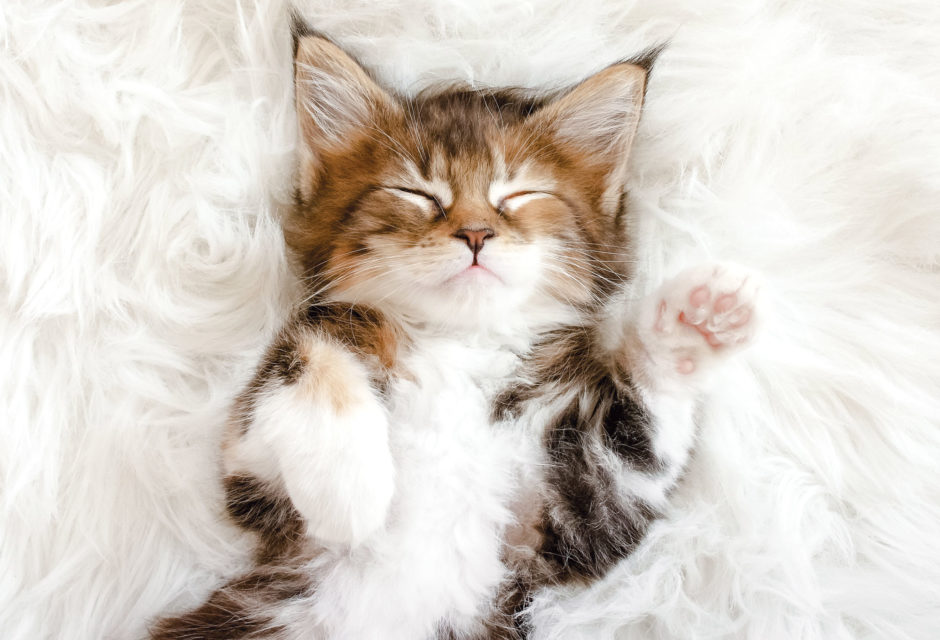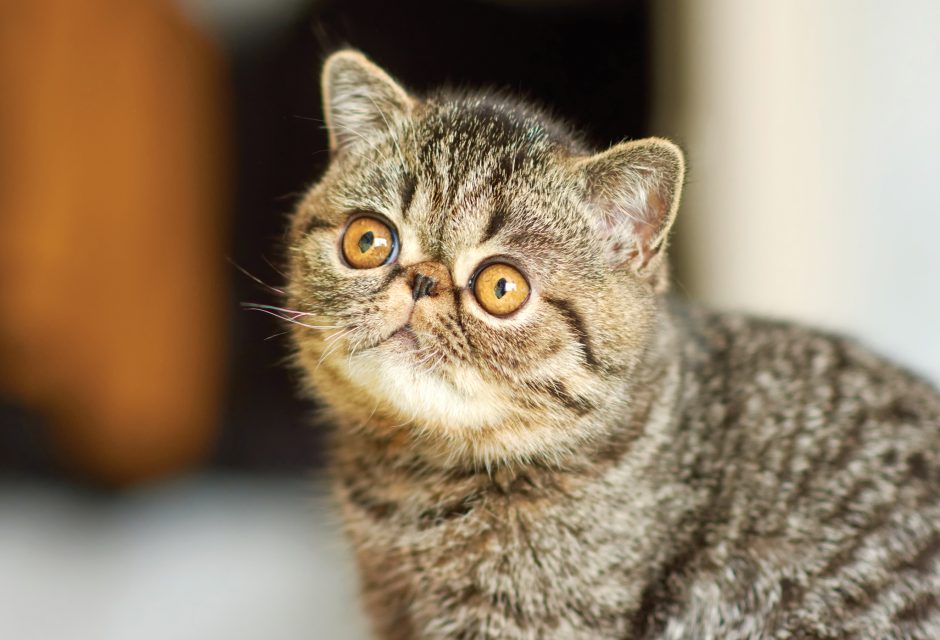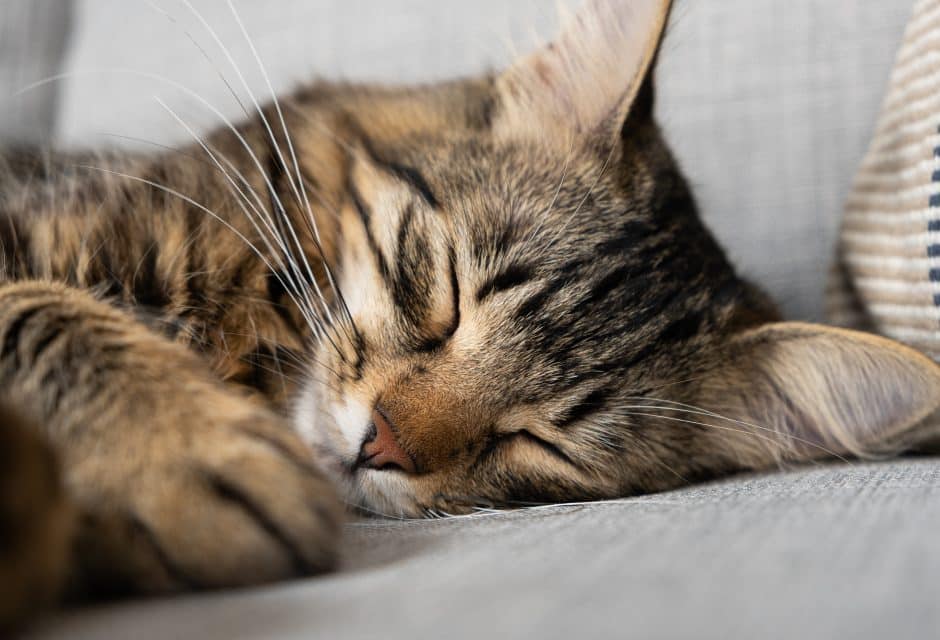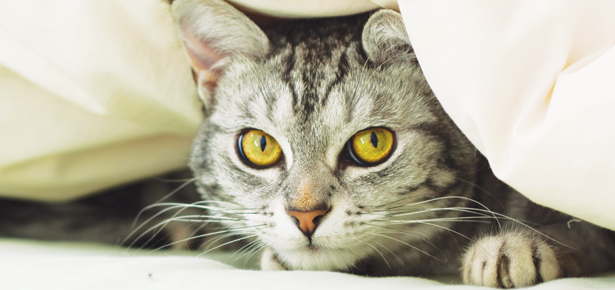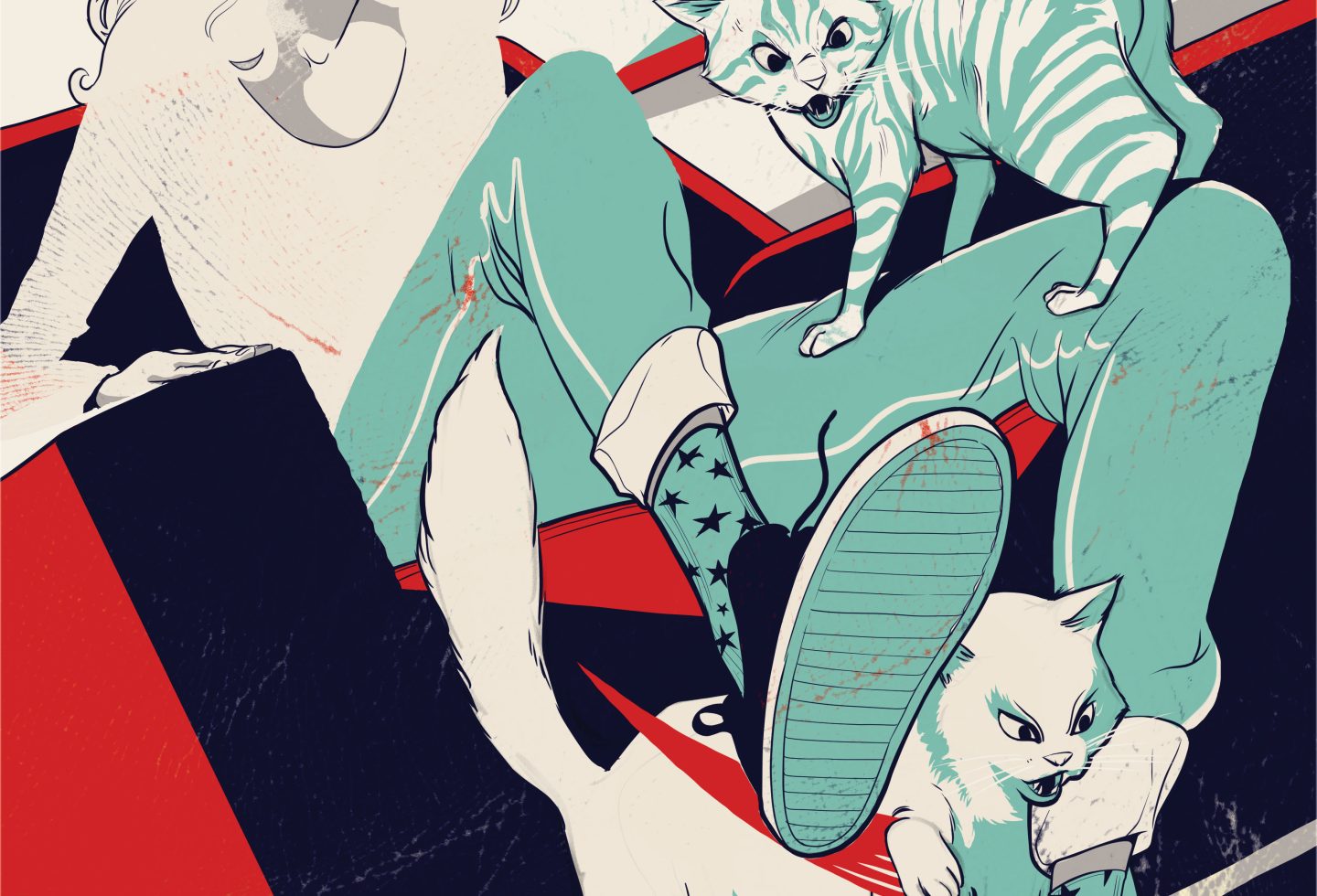
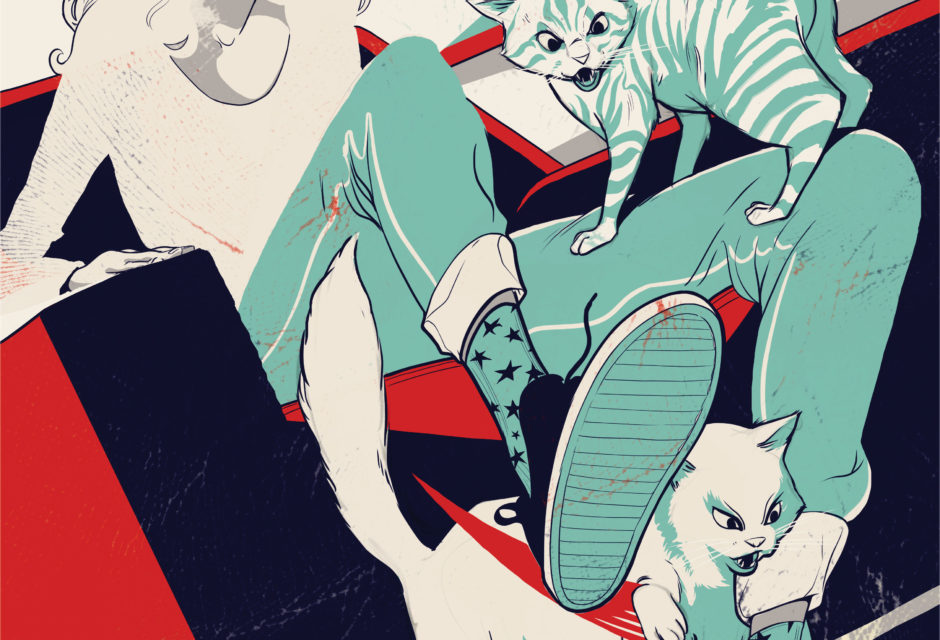
Aggressive Cat? The Cat Whisperer Explains What To Do!
Aggression in cats: how to manage your cat’s inner wildcat
By: Mieshelle Nagelschneider, Cat Behaviourist, host of the TV show My Cat From Hell, and author of the cat behaviour science book, The Cat Whisperer
Last Updated:
Do you have an aggressive cat? Determine what’s causing your cat’s aggression and discover clear, actionable, expert advice on how to manage feline aggression with expert tips from the Cat Whisperer.
First Off, What is a Cat Whisperer?
Mieshelle Nagelschneider is a Cat Whisperer. This Harvard-trained feline behaviourist has devoted her life to helping people better understand their cats. In her science-based feline behaviour book, The Cat Whisperer: Why Cats Do What They Do and How to Get Them to Do What You Want, the feline aggression chapter is, by far, the longest chapter. The reason for this is there are several types of aggressive cats and many more reasons and circumstances as to why the aggression occurs. She provides, in a very detailed and organized way, behaviour plans and strategies to manage the different forms of feline aggression. Below, she helps you identify the cause of your cat’s aggression and provides clear tips on how to manage your cat’s aggression.
Who is the Cat Whisperer and How Can She Help Your Aggressive Cat?
Meet Mieshelle Nagelchneider, new host of My Cat From Hell!
In my 20 plus years of consulting with cat owners around the world who have aggressive cats, I often find they have not only misunderstood the kind of aggression their cats are displaying, but most importantly, they misapprehend the reason the aggression is being displayed, to begin with, and what to do about it. Many feel their cats are bad, do not like them, or are trying to spite or get back at them. All of these, of course, is incorrect.
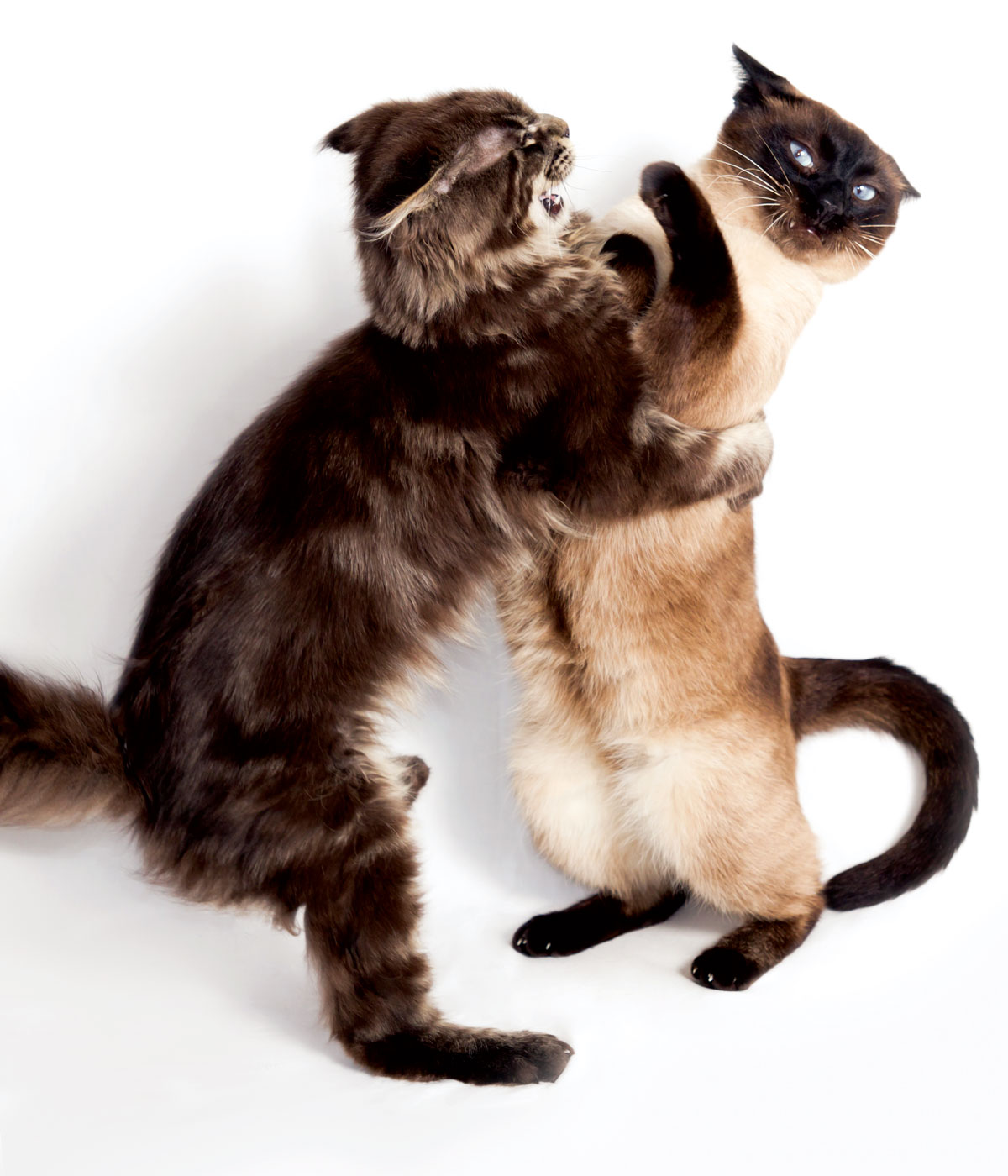
Photo: dianarui/bigstock.com
The Most Common Forms of Cat Aggression & What You Can Do
#1 Play Aggression:
Kittens have a strong survival instinct to practice their hunting skills. What looks cute and playful to us, is, in fact, several predatory motor pattern sequences that kittens practice over and over again to become good hunters. Normally they would have their littermates to sharpen these skills with, but if not, another cat in the household (oftentimes a somewhat unwilling adult cat), human, or even the family dog will suffice for the budding hunter. At 16 weeks of age, there is a noticeable increase in their play aggression activity and many kitten owners begin to wonder what they’ve gotten themselves into.
What to do: How to Manage Play Aggression in Cats
First and foremost, never physically reprimand a kitten. This can cause more aggression and teach them to also fear you, which can then cause new types of aggression to develop.
The best strategy is to exhaust your kitten’s playful and exploratory behavior with the appropriate cat toys and kitten habitat you create. This should include battery-operated toys, wand toys, solo toys, and items to hide in and also climb and perch on. Change the locations of these toys and environmental enrichment items often so they hold your kitten’s interest and do not become mundane.
Do not use your hands to play with your kitten directly. In fact, keep hand interaction at a minimum when your kitten is in play mode. Picking up and petting your kitten is a very positive thing, but with certain kittens, too much petting can elicit the “grab and bite” behavior that their instincts are still telling them to practice.
When adopting a new kitten, strongly consider adopting two kittens. This will decrease stress for the kitten, provide them a play-fighting friend, and help them further develop into a confident and well-adjusted cat.
Alert: Are You Underfeeding Your Kitten? It Can Cause Aggression!
Sometimes kitten owners unknowingly under-feed their growing kittens. Because a kitten’s metabolism wheel is spinning much faster than an adult cat, several feedings a day or leaving food always available instead of the old-school and harmful advice of twice a day scheduled feedings, is a must. Kittens also need more calories per unit of body weight than an adult cat. This can mean at least triple the amount of cat food than an adult cat would eat. In addition to not reaching their full genetic growth, hungry or malnourished kittens can develop aggression issues. When in doubt, feed your growing kitten!
 #2 Petting-Induced Cat Aggression:
#2 Petting-Induced Cat Aggression:
This is one of the most common forms of cat aggression. Cats can become overstimulated or fearful if you pet them for too long or on an area of the body they don’t enjoy. The cat will lash out clawing or biting as part of a natural fear-based aggression response.
What to do: Inter-Cat Aggression
Stop petting your aggressive cat while he is still enjoying it and shows no signs of wanting you to stop. Over time, you will raise your cat’s stress threshold to be pet. Simply put, he will eventually begin to trust that your petting doesn’t create a negative feeling. In contrast, most cat owners will wait until their cat tries to bite them or displays irritable signs (ears back, body tensing up, growling or hissing) and then stop petting their cat. While you should absolutely stop petting a cat who has begun to show signs of biting you or who attempts to bite you, from a behavioral perspective, petting up to this point teaches him that every time you pet him it’s a bad experience. Again, the goal is to improve his petting threshold by ending the petting way before your cat would normally try and bite you or shows signs of stress.
Giving your cat attention in other ways can also be beneficial. Playing with your cat using an interactive wand toy or incorporating clicker training into his daily life can help satisfy the attention and interaction with you that he craves.
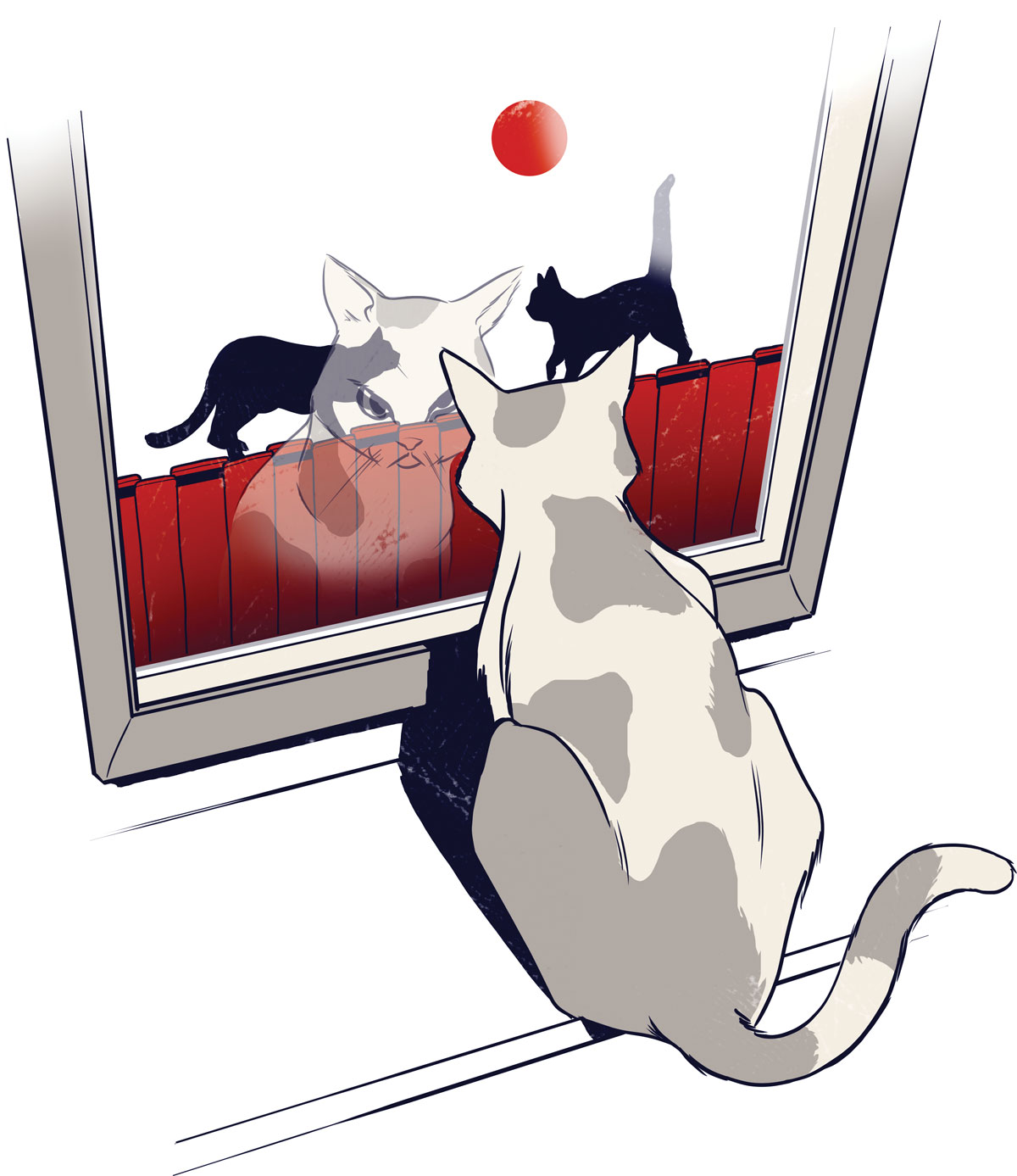
Illustrations by Ryan Garcia
#3 Redirected Cat Aggression:
This is a typical kind of aggression that is a result of something triggering your cat’s fear and your cat unable to direct the aggression at the stimulus that caused the fear. Your cat can then misdirect the aggression on anything nearby—the dining room chair, another cat or person. Many cat owners will describe this type of aggression as the most baffling kind because they can’t always see the cause and the attack comes suddenly out of nowhere and sometimes several hours after the cat’s fear was initially triggered. About half of all feline aggression towards humans is redirected aggression. The cat’s fear is what needs to be addressed to prevent what might possibly happen next, the redirected aggression.
How to Train an Aggressive Cat
Avoid fear triggers in your cat’s environment. The most common are seeing a stray or neighborhood cat or other animals outside, loud noises, new or strange smells, stressful events like a vet visit, and indoor cats not getting along.
If you see your cat is becoming fearful or if you’re unsure, try distracting your cat with a wand toy to trigger your cat’s playful behavior. Cats cannot feel fearful when they are watching or playing with a cat toy. This is their most confident and fear-free mood state.
If you can do so safely, remove the fear trigger or block your cat’s view of it. Do not attempt to pet or move a cat that may be agitated.
If your cat has already become aggressive, it’s best to leave him alone until he calms down, which can take anywhere from several minutes to several hours, or longer. Then trigger his happy mood state by maneuvering a wand toy or another toy he enjoys.
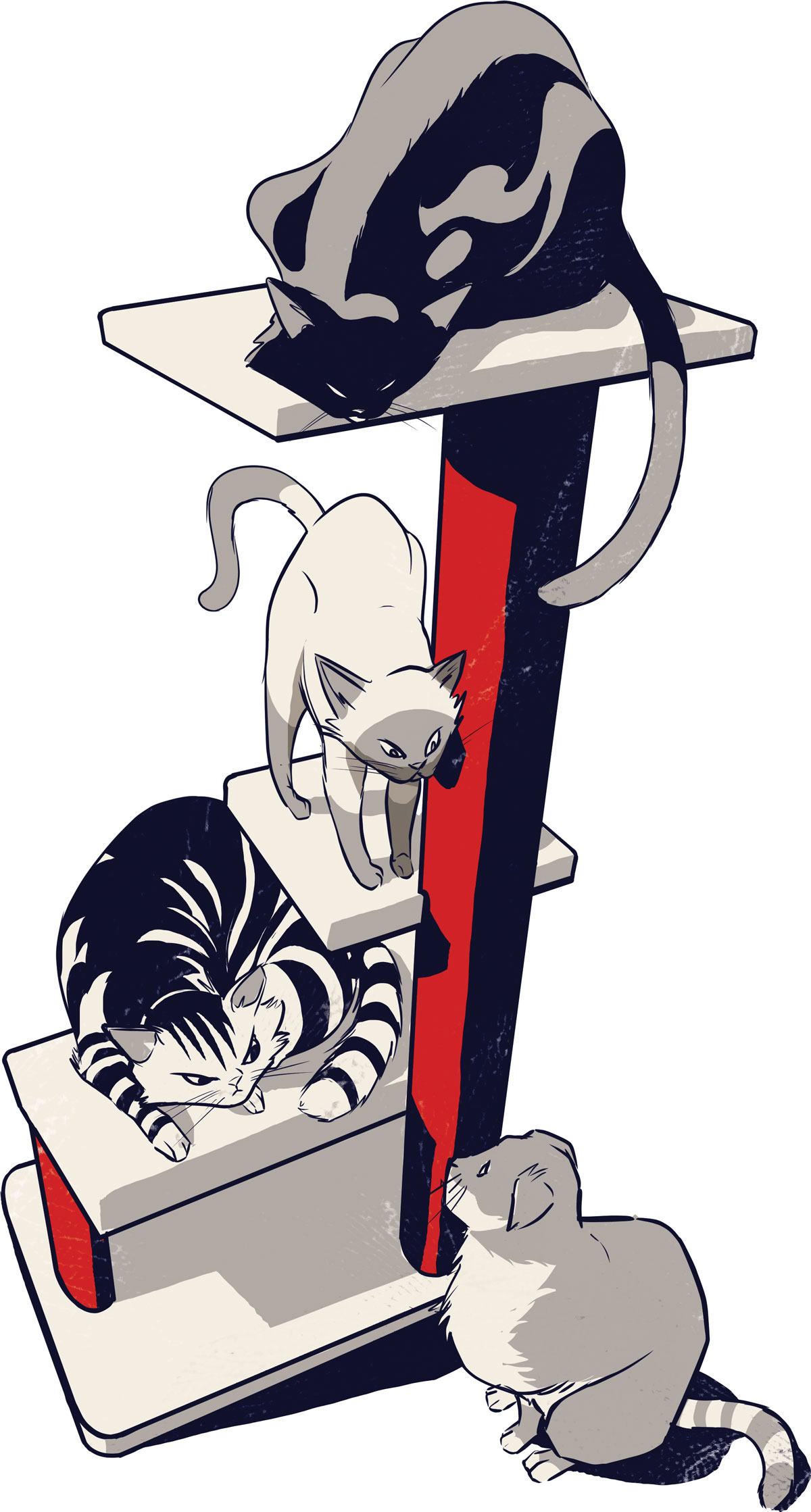
Illustrations by Ryan Garcia
#4 Aggression Between Cats:
Cats not getting along is one of the most common complaints amongst cat owners. If you are introducing cats for the first time, follow a behavior plan that gradually introduces them to avoid a confrontation that can cause aggression. For cats that once got along and no longer are, they may need to be gradually re-introduced. In addition to the introduction and re-introduction process outlined in my book, there are other important strategies to help ensure a peaceful co-existence with multi-cat households. Cats are territorial (even more than dogs) and this is one of the main reasons for inter-cat aggression. You can decrease territorial thinking to minimize or end the bullying of a victimized cat, as well as resource guarding, fighting between cats, and stress that can lead to other behavior issues such as litter box avoidance.
What to Do: Cat Whisperer Tips
Ample Cat Resource Distribution
Make sure you have not created an environment where the cats think the resources are too few. This means not only do you need enough cat resources in your home, but they need to be in numerous locations. For example, you can have five water bowls, but if they are all in the kitchen, this can cause competitiveness and worry because of too few locations for this resource. This is one of the most common reasons for the territorial thinking that can lead to fighting between cats. Instead, place each water bowl in very different locations throughout the home—north, east, south, and west locations is a good rule to follow. Food, water, litter boxes, cat toys, cat scratchers, cat trees, and cat beds are all important resources cats take turns using each day. This activity is also known as time-sharing and it’s a way that cats structure their social hierarchy. These resources need to be in multiple locations. If the locations are not plentiful enough, it can create a lot of undue stress that can lead to aggression issues.
Rethink Your Cats’ Feeding Schedule
Cats that are fed frequently or have food more readily available are less aggressive and more cooperative with one another. If feeding scheduled meals, instead of two larger meals spaced several hours apart, it’s now recommended to feed cats their regular calorie allotment, but in several smaller meals throughout the day. Cats are designed to eat more frequently than just twice a day. Many cat owners utilize timed-feeders for both canned and dry food to dispense multiple meals throughout the day. A hungry cat with too many hours in between meals is a stressed cat, and this can create inter-cat aggression issues.
Feline Pheromones to the Rescue!
Feline pheromone products can help cats feel calm, safe, and friendly. The diffusers are the easiest to use and very effective in helping cats get along with one another.
Humans in families have last names; cats need to have scent last names in order to feel affiliated with one other and to help eliminate cat aggression issues. Create this very important social glue between your cats by brushing each of them with the same brush daily. Brush each cat 10 to 20 strokes before moving onto the next cat. Go through all your cats three separate times without keeping a particular order. Gently brush the head, cheeks, neck, shoulders, and ribcage. Leave out the hindquarters and tail for this strategy.
Be sure to leave the hair in the brush between cats because the goal is to create a group scent on all your cats instead of the cats smelling differently from one another. If you have two cats, you will be creating a two-cat scent on each cat. Five cats, a five-cat scent. This strategy only takes a few minutes each day and really makes a difference in facilitating friendly social behavior between cats. Without a group scent, it spells trouble!
Cat Toys and Playtime
Don’t forget to have toys available for your cats and to play with each of your cats daily. If their natural hunting behavior is not exhausted each day by playing with a cat toy you can deal with aggressive cat behavior, their stress response system can become activated which can lead to inter-cat aggression.
Join the newsletter and never miss out on cat content again!
"*" indicates required fields
By clicking the arrow, you agree to our web Terms of Use and Privacy & Cookie Policy. Easy unsubscribe links are provided in every email.





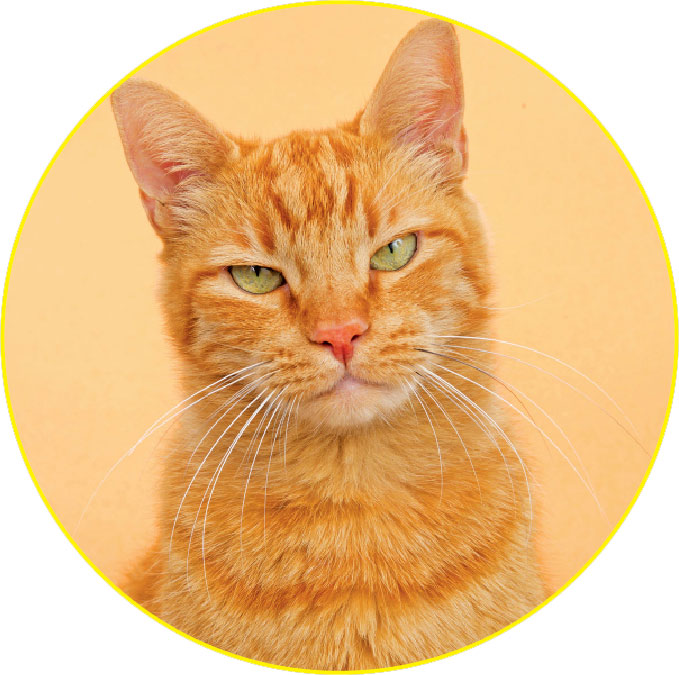
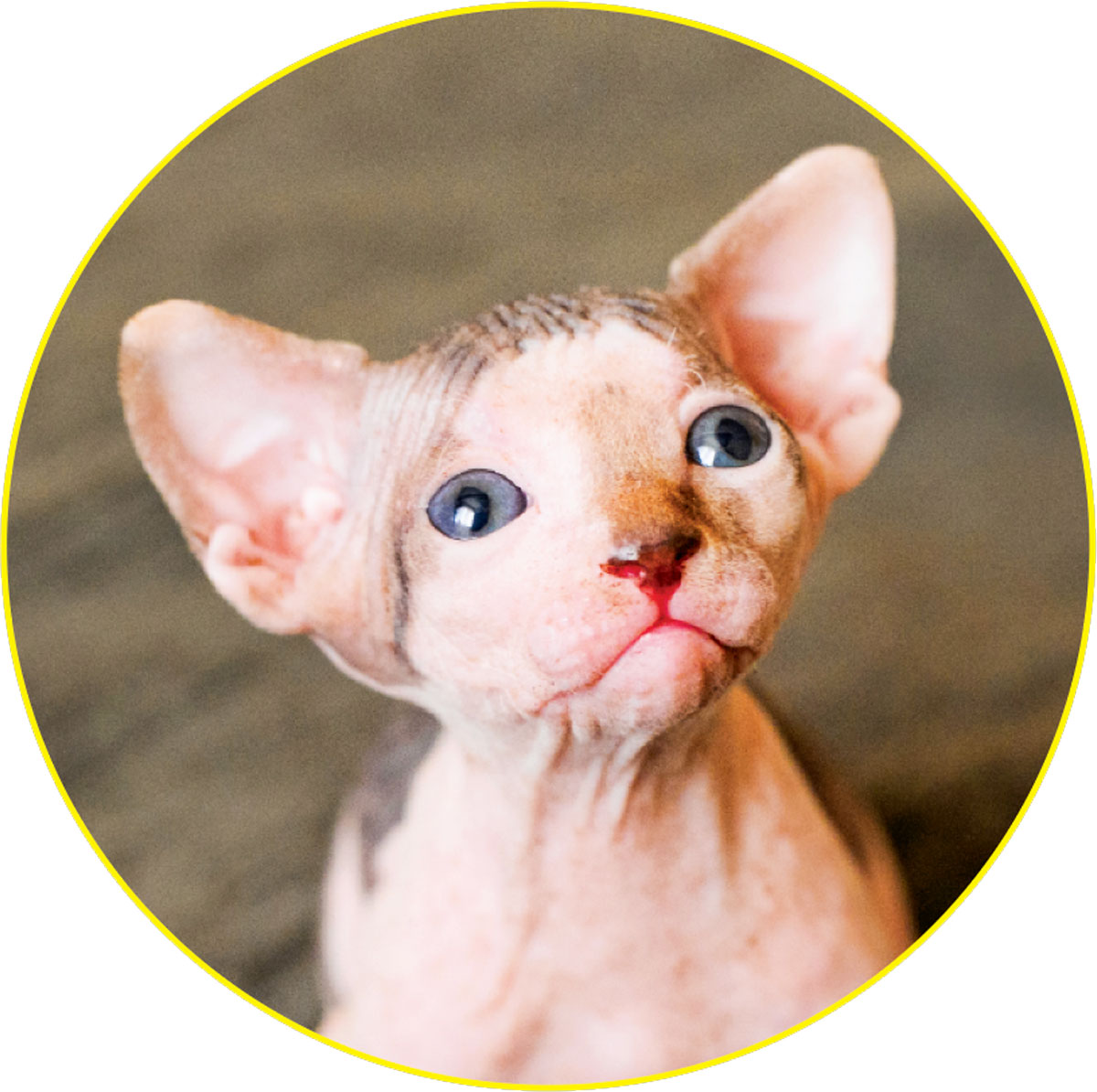
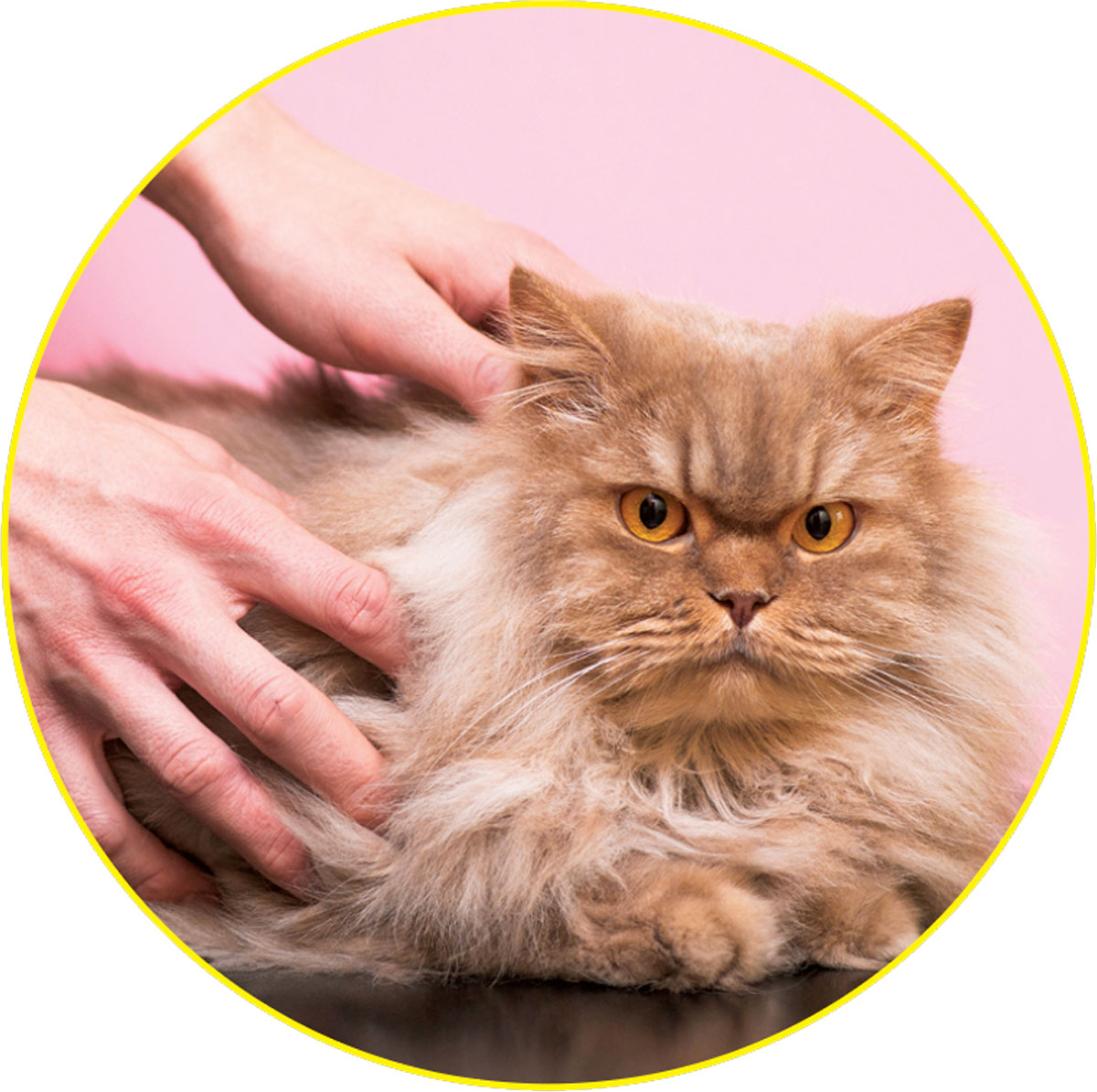 #2 Petting-Induced Cat Aggression:
#2 Petting-Induced Cat Aggression:
